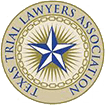 Imagine this scenario: You're working at your construction job in Dallas when a delivery truck driver who doesn't work for your company backs into you and causes serious injuries. You know your employer doesn't carry workers' compensation insurance. What are your options for recovering compensation for your medical bills and lost wages?
Imagine this scenario: You're working at your construction job in Dallas when a delivery truck driver who doesn't work for your company backs into you and causes serious injuries. You know your employer doesn't carry workers' compensation insurance. What are your options for recovering compensation for your medical bills and lost wages?
This is where the concept of third-party liability comes into play. It may apply in the situation described above and many others. Generally, third-party liability applies in workplace accidents when someone other than your employer or a co-worker causes the accident, giving you a potential legal claim against that third party. An experienced workplace injury lawyer like Warren Armstrong can review the details of your case and advise you of your rights.
Understanding Third-Party Liability in Texas Workplace Accident Claims
Texas law allows most private employers to opt out of providing workers' compensation coverage. Companies that don't provide this coverage are called non-subscribers. If you work for a non-subscriber, you can't file a workers' comp claim after a work-related injury. However, you may be able to bring a personal injury claim against your employer if their negligence led to unsafe working conditions.
Additionally, you may have a third-party liability claim if the negligence of an individual or company other than your employer contributed to your injuries. Examples of third parties who could be held liable for workplace accidents include:
- Drivers. If you were in a car accident while driving for work, the at-fault driver could be liable for your injuries. Similarly, the driver and their employer may be responsible if a delivery truck driver causes an accident at your work site.
- Manufacturers. Defective machinery, tools, or equipment can cause devastating workplace injuries. If a product defect is to blame for your accident, you may have a claim against the manufacturer.
- Property owners. If you're injured while working on someone else's property, the property owner could be liable if they knew about a dangerous condition but failed to warn or take steps to keep you safe.
- Subcontractors. Large projects like construction jobs often involve multiple subcontractors. If the actions of a subcontractor cause an accident, you may be able to bring a claim against that subcontractor.
Identifying the third parties who may be liable for your injuries is a key aspect of protecting your rights after a workplace accident. However, it's only one piece of the puzzle.
Proving Liability Requires Strong Evidence
To hold a third party accountable for your work-related injuries, you must prove that their negligence directly caused your accident injuries. Gathering evidence to support your case is crucial. Here are a few examples of evidence that may help prove a third-party liability claim:
- Accident reports. OSHA requires employers to keep records of serious work-related injuries and illnesses. Additionally, it's a good idea to notify your supervisor in writing if you're hurt on the job. Documentation of the accident can provide valuable evidence for your claim.
- Video footage. Many work sites have surveillance cameras that may have captured your accident on video. Dashcam footage can be vital evidence if you were injured in a work-related car crash.
- Witness statements. If anyone else saw your accident, their testimony can help back up your story. Write down the contact information for any witnesses. An attorney can reach out to them for statements to support your case.
- Physical evidence. In cases involving defective equipment, preserving the actual product that caused your injuries can be key evidence for your claim. It's also a good idea to save any blood-stained clothing and take photos of visible injuries.
- Medical records. You will need medical evidence of the injuries you sustained in the workplace accident. It's essential to seek treatment right away and attend all follow-up appointments. Keep track of your medical expenses and records.
The more evidence you have, the better your chances of proving a third party was at fault for your injuries. However, there's another factor that can affect the outcome of your workplace injury case.
Shared Liability Can Affect Your Compensation
Texas follows a modified comparative negligence rule. Under this rule, you can still recover compensation for your injuries if you were less than 51% at fault for the accident. However, your damages will be reduced by the percentage of your fault.
For example, let's say you're a construction worker in Fort Worth. A subcontractor fails to secure their equipment correctly, causing a brick to fall on your head. The subcontractor may try to argue that you were partially at fault for not wearing a hard hat. If you're found to be 30% liable, you can only recover 70% of your damages from the subcontractor.
This is one of many reasons why it's essential to work with an attorney who understands Texas workplace injury laws and has experience handling third-party liability claims. Your lawyer can gather evidence to defend you against allegations of comparative negligence and fight for the maximum compensation possible.






